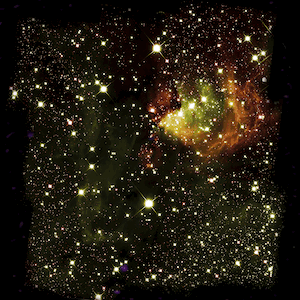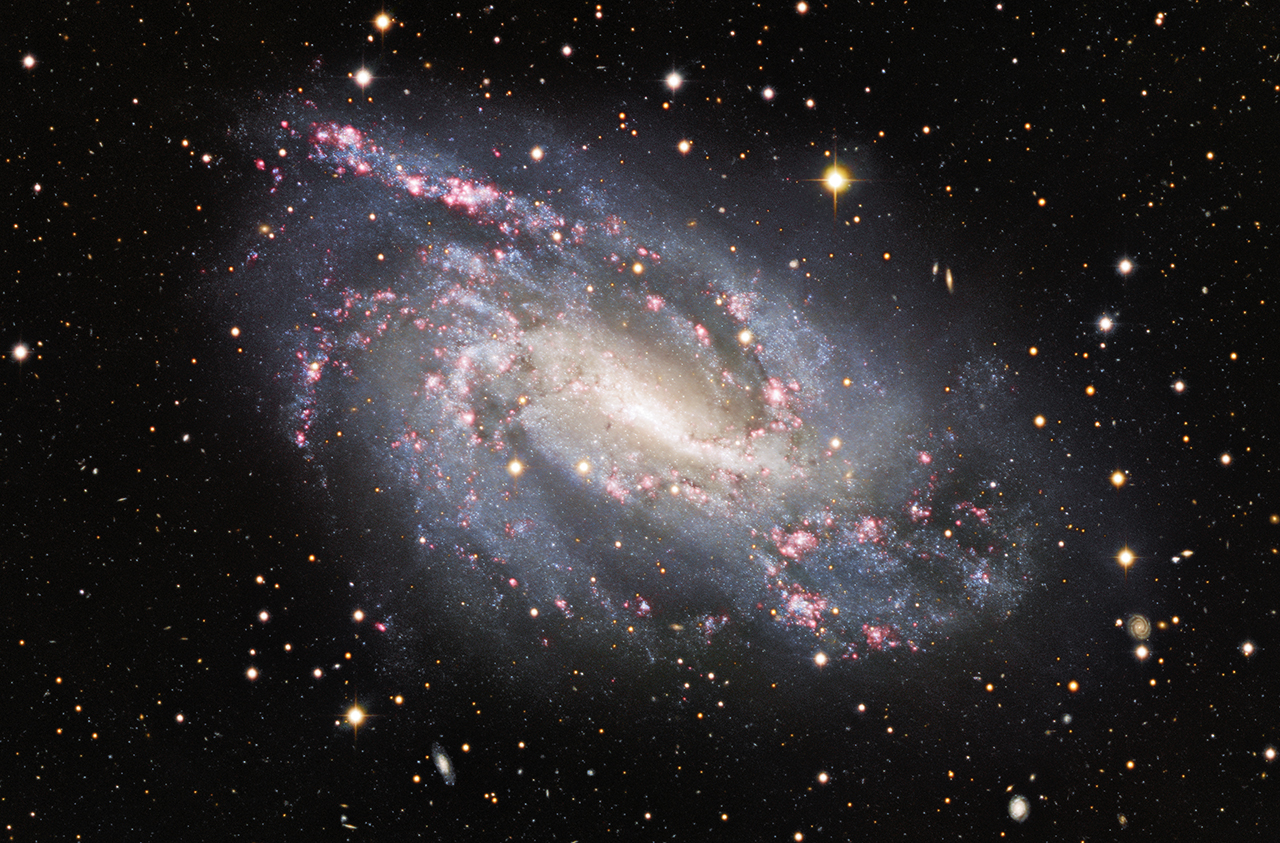Cosmic 'fireworks' shine in baby star cluster and distant galaxy

A high-powered telescope array has caught the brilliant fireworks-like "streamers" of gas formed during an early stage of star development in a giant cluster.
That process may take a million years to complete, according to scientists who captured a new look at the star cluster formally known as G286.21+0.17. To image the star cluster in all its glory, the astronomers used two different instruments: the Hubble Space Telescope, which provided a look at the existing stars in the cluster, and the Atacama Large Millimeter/submillimeter Array (ALMA) in Chile, which provided a look at the gas falling inward to form future stars.
"This illustrates how dynamic and chaotic the process of star birth is," co-author Jonathan Tan of Chalmers University in Sweden and the University of Virginia, said in a statement. "We see competing forces in action: gravity and turbulence from the cloud on one side, and stellar winds and radiation pressure from the young stars on the other."
Related: It's full of stars! Brilliant cluster captured in new images, video
"This process sculpts the region," Tan said in the statement. "It is amazing to think that our own sun and planets were once part of such a cosmic dance."
The gas in that dance is colored based on how quickly it is moving with regard to our sun. (That said, the cluster is about 8,000 light-years away from Earth.) Pinker purples represent more slowly moving gas, while bluer purples represent faster moving gas. Scientists combined more than 750 different photographs from ALMA to create the final picture of the gas.

That gas is falling into the cluster thanks to the work of gravity, and once it fully collapses, it will become the stuff new stars are made of. But it's a slow process unfolding in a large system: the researchers suspect it will take about a million years before the cluster finishes developing.
Get the Space.com Newsletter
Breaking space news, the latest updates on rocket launches, skywatching events and more!
The research is described in two recent papers published in The Astrophysical Journal.
While astronomers enjoy the fireworks in star cluster G286.21+0.17, another team of astronomers dug up some celestial pyrotechnics of their own.

Astronomers with the Nicholas U. Mayall 4-meter Telescope at Kitt Peak National Observatory in Arizona, part of the National Science Foundation's NOIRLab, looked into their archives to find this image of cosmic fireworks in the galaxy NGC 925.
"If you're looking for fireworks for the US celebration of the Fourth of July, then look no further than the world of astronomy," researchers wrote in a statement. "The cosmic firework at the center of this image, the spiral galaxy NGC 925, resembles a vast pinwheel, with a bright central bar and swirling spiral arms. The red bursts strewn throughout NGC 925 are eruptions of star formation, which can be traced by observing conspicuous hydrogen-alpha emission."
NGC 925 is about 20 million light-years from Earth in the direction of the constellation Triangulum (The Triangle).
Email Meghan Bartels at mbartels@space.com or follow her on Twitter @meghanbartels. Follow us on Twitter @Spacedotcom and on Facebook.
Join our Space Forums to keep talking space on the latest missions, night sky and more! And if you have a news tip, correction or comment, let us know at: community@space.com.

Meghan is a senior writer at Space.com and has more than five years' experience as a science journalist based in New York City. She joined Space.com in July 2018, with previous writing published in outlets including Newsweek and Audubon. Meghan earned an MA in science journalism from New York University and a BA in classics from Georgetown University, and in her free time she enjoys reading and visiting museums. Follow her on Twitter at @meghanbartels.
-
rod As the space.com article states, "That process may take a million years to complete, according to scientists who captured a new look at the star cluster formally known as G286.21+0.17."Reply
This is a good measurement by ALMA and angular resolution seems to be about 1200 mas (1.2 arcsec) to image a few 1000 AU size observed or even smaller perhaps. https://iopscience.iop.org/article/10.3847/1538-4357/ab879f, "Spectra of 76 continuum-defined dense cores, typically a few 1000 au in size, are analyzed to measure their centroid velocities and internal velocity dispersions." Another source disclosed "Hubble revealed about a thousand newly-formed stars with a wide range of masses. Additionally, ALMA showed that there is a lot more mass present in dense gas that still has to undergo collapse. "Overall the process may take at least a million years to complete," Cheng added. "This illustrates how dynamic and chaotic the process of star birth is,", https://phys.org/news/2020-07-stellar-fireworks-celebrate-birth-giant.html
Completing the process of star formation continues to be messy and these reports indicate that. Magnetic fields can disrupt gas clouds as well as gas cloud fragmentation too.









